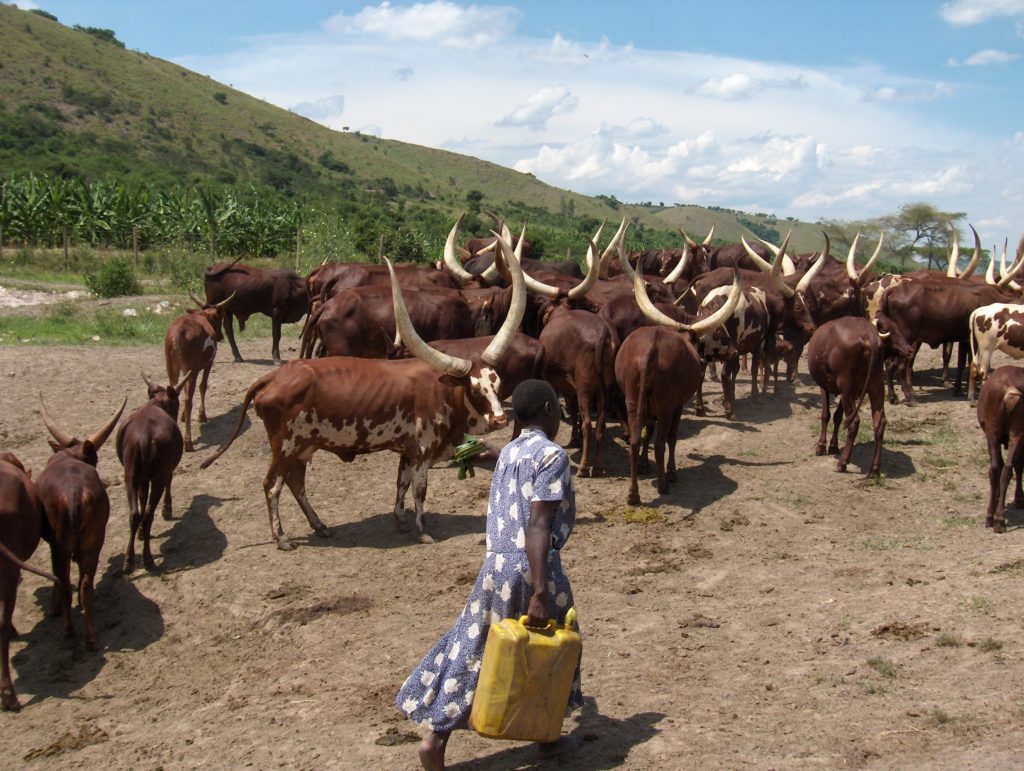
Most international efforts around water provision and access have been targeted at water for domestic use, e.g., the UN Millennium Development Goal of halving the proportion of people without access to safe drinking water by 2015. This is an important public health goal, particularly in Sub-Saharan Africa where less than half the population have access to an improved water supply in rural areas. However, if the ultimate goal includes poverty reduction then secure and adequate access to water for livelihood needs must also be addressed.
To assess how current policies and practices are influencing water access in South-western Uganda, my doctoral research investigated livelihood, settlement, and poverty policy influences on access to water for the Bahima pastoralists in three villages in Nyabushozi County, Kiruhura District. Data were collected using qualitative methods (semi-structured interviews, focus groups, and dialogical interchanges). Historical and colonial context was also provided to preface current policies and practices.
Results show that due to a high degree of land privatisation, coordinated land and water development is essential when planning for communal water sources; livelihood issues are key in prioritising rural water development for domestic and productive requirements in communities; and while self-supply measures such as farm ponds can become de-facto community sources, an inclusive communal water source that meets livelihood needs is critical, especially for the poor.
Integrated Water Resource Management (IWRM) aims to coordinate development with water and land management to maximise economic and social benefits in an equitable and sustainable manner. Generally considered cumbersome to implement at a macro-level, the study demonstrates an effective way of incorporating IWRM on a more local level by focusing on access to water through a modified livelihoods framework. Successful implementation depends on sector funding geared toward rural water provision, increasing local government capacity and involving communities in prioritising and addressing their water needs.
Water sources need to be developed at the appropriate level with more sector funding geared toward rural water provision and capacity at local levels to adequately involve communities in prioritising and addressing their water needs.
